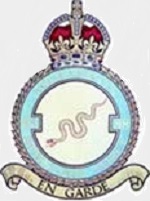Hobby Master HA4209 RAF Douglas Boston Mk.IV Light Attack Bomber - BZ405, No.88 Squadron, RAF Hartford Bridge, Hampshire, England, 1944 (1:72 Scale)
"Thanks to its 2,400 hp engine it had a considerable margin of excess power and its acceleration was phenomenal. It was pretty tricky to fly, but its performance more than made up for it..."
- French ace Pierre Clostermann, from his book "The Big Show"
 The Douglas A-20/DB-7 Havoc was a family of American attack, light bomber and night fighter aircraft of World War II, that served with several Allied air forces, principally those of the Soviet Union, United Kingdom, and United States. The DB-7 was also used by the air forces of Australia, South Africa, France, and the Netherlands during the war, and Brazil afterwards. The bomber aircraft was known as Boston among British and Commonwealth air forces, while the Royal Air Force night fighter variants were given the service name Havoc. The United States Army Air Forces assigned the DB-7 the designation "A-20" and gave it the popular name "Havoc".
The Douglas A-20/DB-7 Havoc was a family of American attack, light bomber and night fighter aircraft of World War II, that served with several Allied air forces, principally those of the Soviet Union, United Kingdom, and United States. The DB-7 was also used by the air forces of Australia, South Africa, France, and the Netherlands during the war, and Brazil afterwards. The bomber aircraft was known as Boston among British and Commonwealth air forces, while the Royal Air Force night fighter variants were given the service name Havoc. The United States Army Air Forces assigned the DB-7 the designation "A-20" and gave it the popular name "Havoc".
The A-20J carried an additional bombardier in an extended acrylic glass nose section. These were intended to lead bombing formations, with the following standard A-20s dropping their bombs when signaled by the leader. A total of 450 were built, 169 for the RAF which designated them Boston Mk IV from the summer of 1944 onwards.
This particular 1:72 scale replica of a RAF Douglas Boston Mk.IV light attack bomber was attached to No.88 Squadron then deployed to RAF Hartford Bridge, Hampshire, England, during 1944. Sold Out!
Dimensions:
Wingspan: 8-1/4-inches
Length: 11-3/4-inches
Release Date: January 2020
 Historical Account: "En Garde" - In July 1941, No.88 squadron was moved to RAF Swanton Morley, East Anglia where it converted fully to the Boston III and IIIA. The aircraft was well received by the crews. In January 1942, Wing Commander James Pelly-Fry took over as commanding officer. He was a well experienced pilot who had flown in Africa. Pelly-Fry led a series of circus missions over northern France, bombing targets while under heavy fighter escort, including the bombing of the Saint-Malo docks on July 31st, 1942. On August 19th, 1942, the squadron supported Canadian forces during the intense air battles of the Dieppe raid, where the RAF lost 91 aircraft. It flew repeated sorties attempting to destroy field gun positions overlooking the beaches at Dieppe. In September, the squadron was moved to RAF Oulton in Norfolk, where it became an integral part of 2 Group. The crews were billeted at Blickling Hall, a stately home north of Aylsham in Norfolk. From Oulton the squadron carried out attacks on German coastal shipping, coastal targets and targets in northern France. On December 6th, 1942, the squadron was the lead element in Operation Oyster, the daylight raid against the Philips works in Eindhoven. The raid was the most famous and successful raid conducted by 2 Group.
Historical Account: "En Garde" - In July 1941, No.88 squadron was moved to RAF Swanton Morley, East Anglia where it converted fully to the Boston III and IIIA. The aircraft was well received by the crews. In January 1942, Wing Commander James Pelly-Fry took over as commanding officer. He was a well experienced pilot who had flown in Africa. Pelly-Fry led a series of circus missions over northern France, bombing targets while under heavy fighter escort, including the bombing of the Saint-Malo docks on July 31st, 1942. On August 19th, 1942, the squadron supported Canadian forces during the intense air battles of the Dieppe raid, where the RAF lost 91 aircraft. It flew repeated sorties attempting to destroy field gun positions overlooking the beaches at Dieppe. In September, the squadron was moved to RAF Oulton in Norfolk, where it became an integral part of 2 Group. The crews were billeted at Blickling Hall, a stately home north of Aylsham in Norfolk. From Oulton the squadron carried out attacks on German coastal shipping, coastal targets and targets in northern France. On December 6th, 1942, the squadron was the lead element in Operation Oyster, the daylight raid against the Philips works in Eindhoven. The raid was the most famous and successful raid conducted by 2 Group.
In August 1943, the squadron relocated to RAF Hartford Bridge, Hampshire with its sister squadron No.342 Squadron as part of 137 wing of No.2 Group of the 2nd Tactical Air Force in preparation for the invasion of Europe. From there the squadron attacked German communications and airfields. On D-Day itself it was charged with laying the smokescreen to hide the first wave of landing craft.
In October 1944, the squadron returned to France based at Vitry en Artois to join the tactical air forces that were supporting the Allied armies as they advanced across Europe. The squadron was finally disbanded on April 4th, 1945.


